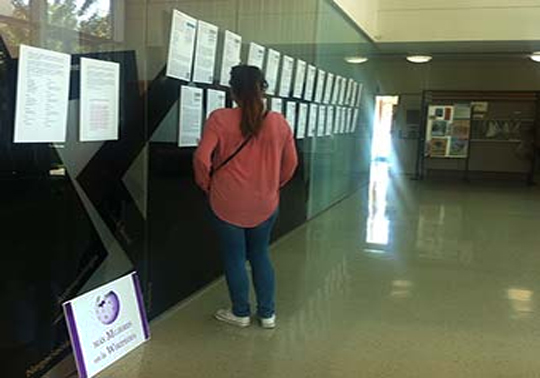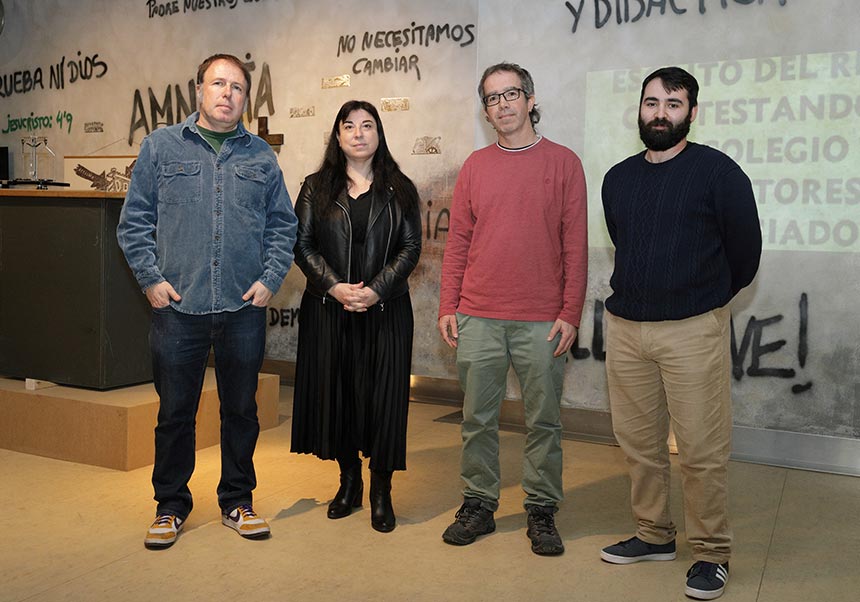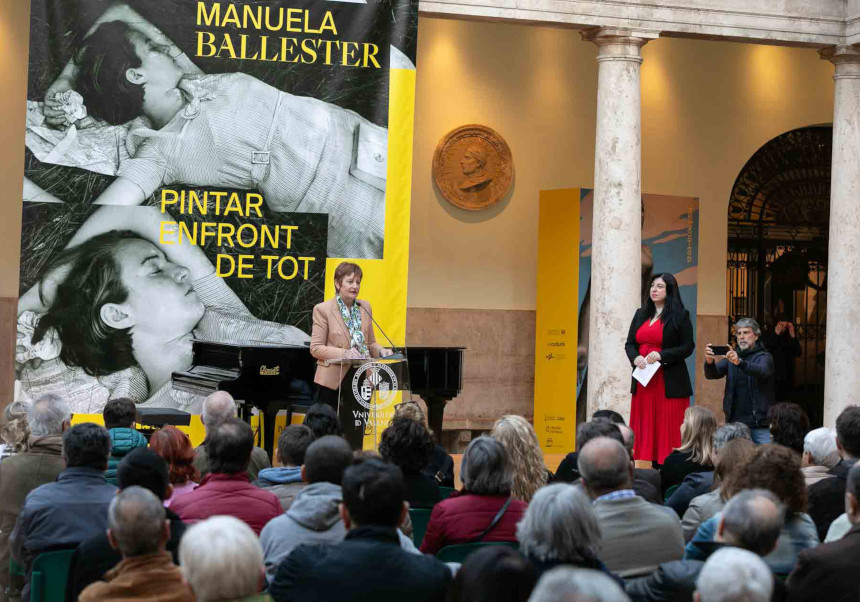An exhibition makes visible female sociologists who appear on Wikipedia thanks to the students
- May 15th, 2017

The exhibition could be visited at the hall of the Faculty of Social Sciences. It is titled ‘Sociologists on Wikipedia’ and shows 24 female authors from different disciplines and several associations, institutions and the magazine ‘Pikara Magazine’. This initiative is carried out by students of Political and Social Sciences who attend a subject given by Professor Capitolina Díaz. The aim of this exhibition is to male visible women of different disciplines on Wikipedia.
The second-year student works of the subject ‘Sociological analysis from a gender perspective’ have focused on looking for a female sociologist, a feminist or a social activist who do not appear on Wikipedia, in the Spanish and Catalan version, and making a biography of this person according to some general and specific academic standards of Wikipedia. The result of this initiative is 31 entries on Wikipedia. Female sociologists such as Lola Frutos, Olga Quiñones and Rita María Radl; activists such as Empar Bria, Justa Moreno and Regina Arrieta; antropologists such as Josepa Cucó and Olatz González; painters such as Dolors Vázquez; philosophers as Mónica Cavallé; architects, politicians, teachers, historians and illustrators are also visible. Furthermore, the student body has introduced on Wikipedia some entries related to associations such as Femenine Progressive Society and the Spanish Association of Muslim women; to institutions such as the Women and Science Committee, and the magazine Píkara Magazine.
Wikimedia Foundation as well as Professor Capitolina Díaz highlight the effort of this group of students who “deserves to be recognised”. Thus, the student body, with the support of the deanship of the faculty and the Wikimedia Foundation, has planned this exhibition in order to be visited by university community. Given that the extension of the articles were too long, it has been used the essential information for the exhibition. But, the rest of information can be followed through the QR code of your smartphones which appears in each female author entry.
File in: Igualtat , Unitat d'Igualtat , Sociología
















